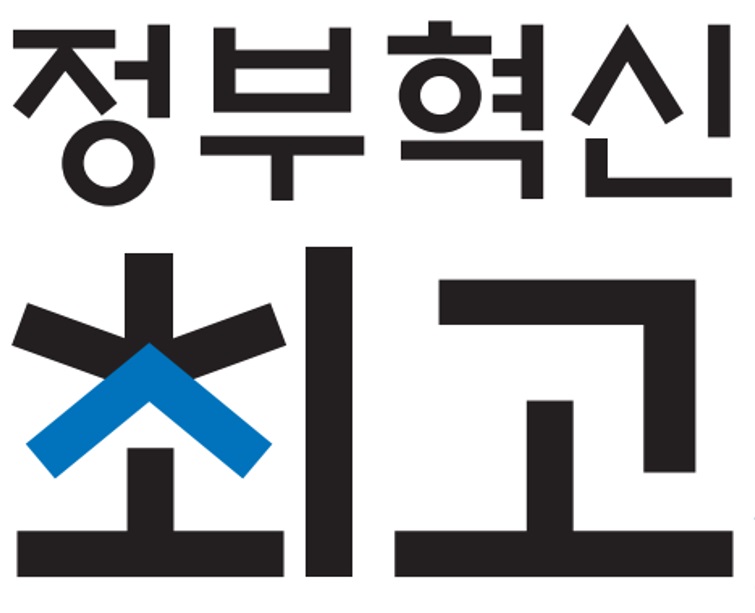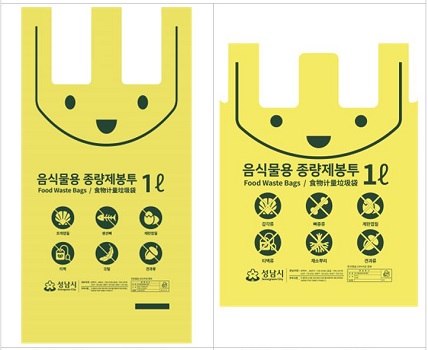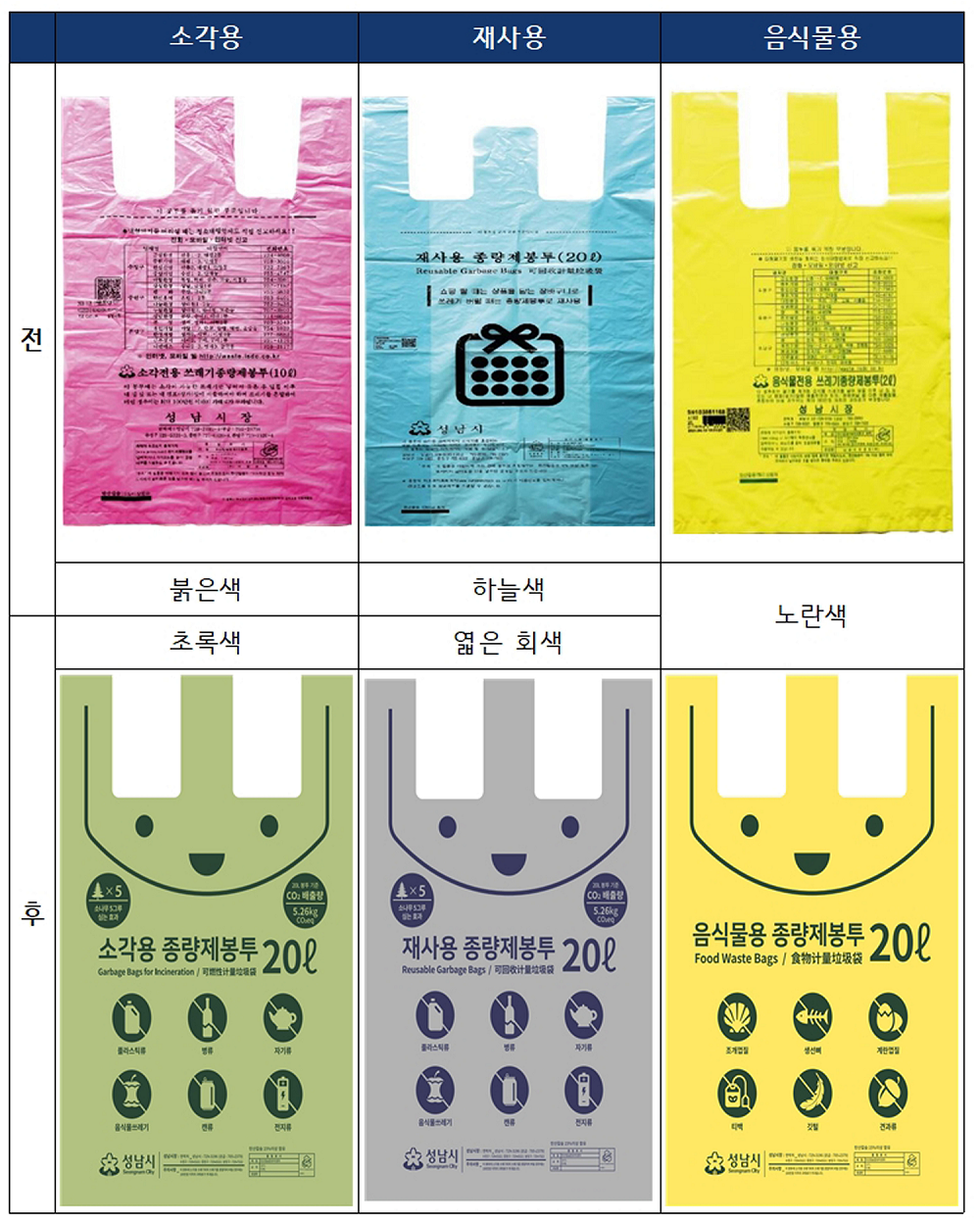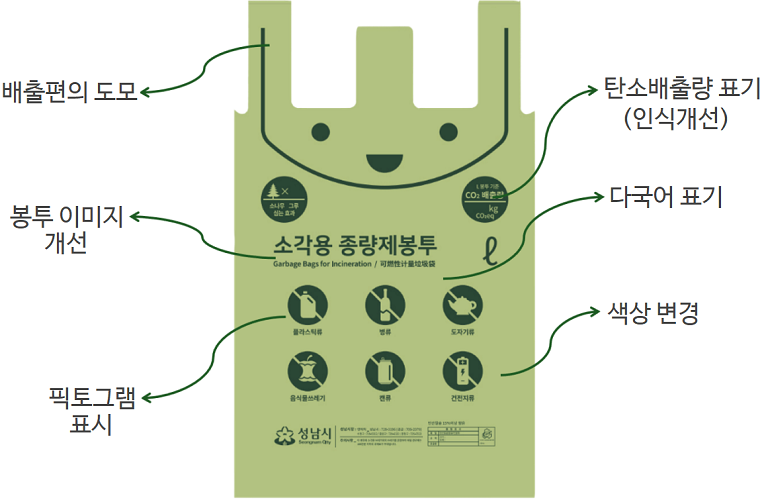The “Firsts” and “Bests” of Government Innovation
The Korean Government will accredit the “Firsts” of our innovations that contributed to the public’s comfort and safety, and select the “Best” cases of government innovation to spread as examples to our many institutions.
The Best
Volume-based Waste Bag
- Seongnam City Office
- 2023-12-26

The City of Seongnam, in Gyeonggi
Province, has improved public satisfaction through the implementation of a
custom volume-based waste bag that applied green materials and greatly improved
functionality and design. We look to the comfort of our citizens, and the
future of our planet. |
Content Seongnam’s volume-based waste bag, newly
designed after 27 years ⓒ
Seongnam √ Accomplishments and expansion |
■ ‘For the Environment, and the Convenience of the Public!’ This waste bag had a purpose for change.
Korea operates volume-based waste management, nation-wide. The policy for waste management aims to increase recycling rates and reduce indiscriminate waste disposal by applying fees according to the volumes of waste disposed. Waste is only disposed through the purchase and use of required sizes of ‘volume-based waste bags.’ The correct disposal of waste through specified waste bags, and the correct practice of recycling are the first steps towards protecting the environment.
However, there is a difference in prices
or disposal methods for these waste bags between each municipal region. Even
the seemingly identical designs of waste bags have their minor differences. The
city of Seongnam decided to listen to the voice of the public to enhance the correct
use and convenience of volume-based waste bags. In particular, the city has
been given high praise for providing a waste bag with improved sizes and
designs. This large accomplishment has come from a small change of listening to
the people, and seeing them eye to eye.

[Comparison of food waste bags]
Before(National Standard): W 15cm x H
29.5cm 》 After (Seongnam): W 20cm x H 26.5cm

Waste bags, before and after the change ⓒ
Seongnam
In order to raise public consciousness of
environmental protection, green messages were added to the waste bags. For the
first time in the nation, waste bags had Carbon emissions (CO₂) quantified for
each size, measured in planted pine trees. Furthermore, to reduce the
environmental impact of the bags, environmentally friendly waste bags with
added calcium carbonate* were produced.
Also, taking in public opinion that
reusable bags with handgrips were being used more than waste bags made for
incineration, all volume-based waste bags were produced with handgrips. The
existing title of ‘incineration-only volume-based waste bag’ was also
simplified to ‘incineration waste bags’ to only note necessary information.
There was also the added detail of English and Chinese translations of titles
added to waste bags, in consideration of the language issues and confusion faced
by the rising foreigner population within the city.

√ Raise disposal convenience: Add a handgrip instead of the existing tie-line. √ Bettering public image of bags: Remove the
word ‘waste’ and emphasize the bags’ purpose of ‘separating’ waste √ Pictograms included: Correct waste
separation is expected, as prohibited items are visually displayed for anyone
to understan d. √ Marking Carbon Emissions (Improving awareness): As
the first case of marking carbon emissions for CO2 reduction, reductions in
waste and resource cycling is expected. √ Multilingual marking: English and Chinese
markings for foreigners residing in the city. √ Color Change: Green colors that harmonize
with the cityscape (incineration waste bags changed from red to green,
re-usable bags switched from light blue to light gray) |
The city of Seongnam has shown a
successful case of developing a public design service that is customized to the
needs of those who use volume-based waste bags in everyday life. Marked as a
best practice example for other municipalities, with regions like the city of
Siheung in the same Province, and Jongro District of Seoul asking for
cooperation in benchmarking the implementation, and regions like Haenam County
in the South Jeolla Province requesting designs. The city of Seongnam is
currently reviewing a free-of charge contract for Haenam to implement their
waste bag design.
The City of Seongnam, collecting the
public’s opinions, plans to continue its improvements in design, and apply
efforts so that users can separate and dispose of waste in a more convenient
and correct way. Even during the production of handgrips for the bags, a
discovery in difficulty of tying the grips led to longer grips being
implemented. Various opinions from the public will be further considered and
reflected in design, much like a recent change in the Chinese wording on the
bags following internal consultation, resulting from a public petition suggesting
a more natural wording of instructions.
